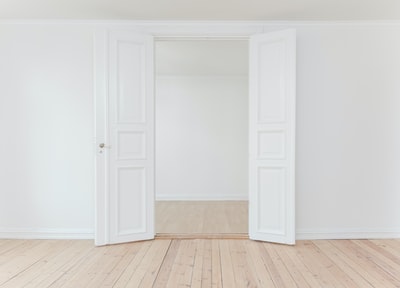As the world of architecture and interior design continues to evolve, new solutions are constantly being sought after to meet the challenges faced by designers and homeowners alike. One such solution that has gained popularity in recent years is frameless glass walls design.
These innovative creations bring a sense of openness and transparency to spaces, creating a fluidity that traditional walls simply cannot achieve. With their sleek and modern aesthetic, frameless glass walls offer a unique opportunity to redefine the concept of space, blurring the boundaries between indoors and outdoors.
But are they truly the answer to common design challenges? Let’s delve into the debate and explore the benefits and limitations of incorporating these contemporary architectural elements into our living environments.
Table of Contents
Introduction: Embracing Innovation in Architectural Design
Frameless glass walls have been revolutionizing the industry by seamlessly blending indoor and outdoor spaces. They have the ability to transform a building’s aesthetic and functionality by maximizing natural light and reducing the need for artificial lighting.

This design choice challenges traditional notions of building appearance and creates visually stunning spaces that push the limits of design. Why confine ourselves to tradition when we can embrace a new era in architectural design?
Frameless Glass Walls: Expanding Boundaries of Space
They have replaced traditional walls as dividers and brought a sense of openness and connection. These minimalist and sleek walls break down physical and visual barriers, seamlessly blending indoor and outdoor spaces.
Architects and designers can now push the boundaries of space like never before. By flooding interiors with natural light and unobstructed views, these glass walls create tranquility and harmony.
They have transformed residential homes, commercial offices, and public spaces, changing the way we perceive and experience design.
The Aesthetic Impact: Elevating Design and Natural Lighting
These modern elements enhance the aesthetic appeal of a space and change how natural light flows through a building. By replacing conventional walls with transparent glass panels, these features create an open and uninterrupted environment that blurs the boundaries between indoors and outdoors.
The integration of interior and exterior spaces maximizes natural light and creates harmony with the surrounding environment. Frameless glass walls can be customized to fit any design style, offering endless possibilities for creativity.
They have truly revolutionized design and made a lasting impact on the world of architecture and interior design.
Transforming Interiors: Enhancing Flexibility and Openness
Transforming design aesthetics with frameless glass is revolutionizing the way we approach interior spaces. As architects and designers continue to seek new ways to enhance flexibility and openness, frameless glass walls have emerged as a game-changer.
The absence of traditional framing allows for uninterrupted views and seamless integration between different areas, promoting a sense of unity and connectivity. This transformational design element not only contributes to a more visually appealing environment but also maximizes natural light, creating a bright and inviting atmosphere.
According to a study by Architectural Digest, incorporating frameless glass walls in commercial spaces has shown to increase employee productivity and satisfaction, while also improving overall morale and teamwork. With its ability to break through barriers, both physical and metaphorical, frameless glass is reshaping the future of interior design.
Explore the possibilities of this transformative element at Architectural Digest’s homepage.
Overcoming Construction Challenges: Engineering Solutions for Durability
A recent advancement in construction is the use of frameless glass walls. These structures have revolutionized building design by providing a sleek and modern look while offering numerous benefits.
They enhance natural light, seamlessly connect indoor and outdoor spaces, improve energy efficiency, and enhance acoustic performance. Frameless glass walls are transforming the architecture experience.
However, this cutting-edge technology does present challenges. Engineers have worked to develop new techniques and materials to ensure the durability and safety of these structures.
Overcoming obstacles like wind loads, thermal expansion, and structural stability, they have created breathtaking architectural solutions that combine form and function in unprecedented ways.
Harnessing the Power of Frameless Glass Walls: Glassspace Revolutionizes Modern Architectural Design
Frameless glass walls have emerged as a revolutionary solution to common design challenges, and Glassspace, a premier provider of glass extensions in London, is leading the way. With their expertise in creating frameless structural glass installations, they offer a harmonious blend of modern architectural design and functionality.
These walls not only create a visually stunning and open space but also provide a seamless integration between indoor and outdoor environments. But their benefits go beyond aesthetics.
Glassspace‘s use of solar-controlled glass ensures a comfortable indoor environment, preventing excessive heat in summer and maintaining warmth during winter. This innovative solution also maximizes natural light, creating a bright and inviting space while reducing the need for artificial lighting.
Whether you seek to bring the outdoors in or create a bold statement, Glassspace‘s frameless glass walls can transform any space into a modern architectural masterpiece.
Frequently Asked Questions
Frameless glass walls are structural glass panels that have no visible framing elements, providing an unobstructed view and a sleek, modern appearance.
Some benefits of using frameless glass walls include enhanced natural lighting, improved aesthetics, increased flexibility in space utilization, and the ability to showcase architectural features.
Yes, frameless glass walls are durable. They are usually made from tempered or laminated glass, which is strong and resistant to breakage. Additionally, they undergo testing to meet safety standards, ensuring their durability.
Yes, frameless glass walls can be used in outdoor spaces. They are designed to withstand different weather conditions, and their sleek design allows for seamless integration with the surrounding environment.
Yes, frameless glass walls can be customized to fit specific design requirements. They can be tailored in terms of dimensions, glass types, finishes, and hardware options to achieve the desired aesthetic and functional goals.
Yes, frameless glass walls can provide sound insulation. By using laminated glass panels or adding acoustic interlayer, they can effectively reduce noise transmission and create a more peaceful indoor environment.
Yes, frameless glass walls can be energy-efficient. Low-emissivity coated glass or double-glazing options can be utilized to enhance thermal insulation and minimize heat transfer, resulting in reduced energy consumption.
Yes, frameless glass walls can be used for privacy. Frosted or tinted glass options are available, which offer varying levels of privacy while still allowing natural light to pass through.
Yes, frameless glass walls are relatively easy to maintain. Regular cleaning with non-abrasive materials and occasional glass treatment will help to keep them looking pristine.
Takeaway
In conclusion, it appears that frameless glass walls have emerged as an intriguing solution to common design challenges. The sleek and minimalist aesthetic they offer can enhance any space, while also allowing for abundant natural light and a seamless connection between indoor and outdoor areas.
However, it is important to acknowledge the potential drawbacks, such as reduced privacy and insulation. Designers and architects must carefully consider the specific needs and characteristics of each project before incorporating frameless glass walls.
Ultimately, while they may not be a universal solution, these walls undoubtedly offer a unique and tantalizing possibility to reimagine the boundaries of interior design.


